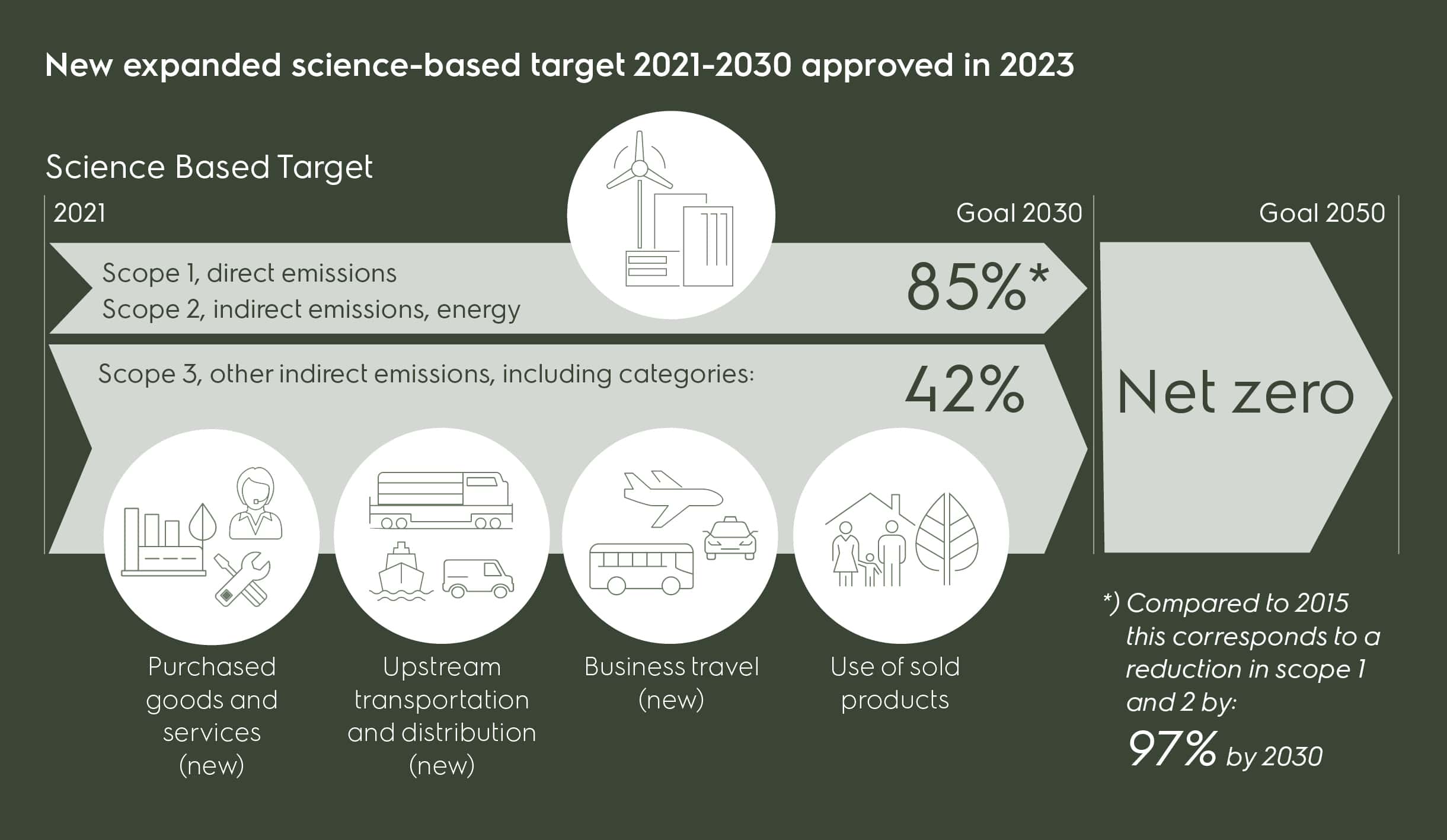The Group’s ambitious Climate Goals focus on its major impacts — to prevent millions of metric tons of greenhouse gases from entering the atmosphere.
The Group’s climate targets
Electrolux Group’s long-term ambition is to ensure that its entire value chain is net zero by 2050. This supports the UN Global Compact — Business Ambition for 1.5°C, which Electrolux Group President and CEO Jonas Samuelson has signed.
Having achieved its 2025 science-based climate target to reduce 80% of absolute emissions in operations (scope 1 and 2) and 25% emissions reduction in the use phase of sold products (scope 3) with baseline 2015, three years ahead of plan in 2022, Electrolux Group got its second science-based target approved in 2023.
Electrolux Group’s second science-based target aims to reduce the emissions from its operations (scope 1 and 2) by 85% and the absolute scope 3 emissions by 42% between 2021 and 2030. In 2023, scope 3 emissions were broadened to include the use of sold products, materials, transport of products and business travel.
The target is aligned with the 2015 Paris climate agreement, which aims to keep the global temperature rise in line with a 1.5°C trajectory to avoid the most severe impacts from climate change.
2021 is used as base year for the new science-based target. Total scope 1 and 2 emissions in 2021 amounted to 103 ktons CO2. Operational control has been used as a consolidation approach.

The case for action
Tackling climate change by reducing greenhouse gas emissions is one of the most urgent challenges facing society. According to the latest Intergovernmental Panel on Climate Change (IPCC) Report (Climate Change 2023: Synthesis Report1)), human activity is already changing the climate in unprecedented ways. The report calls for strong and sustained action to limit climate change.
As product energy use is responsible for approximately 85% of Electrolux Group’s climate impact,2) product efficiency is where the Group can make its greatest contribution to tackling climate change. Electrolux Group is also reducing carbon dioxide emissions from its own manufacturing facilities as well as from transportation, materials used in products and business travel. In addition, the Group can make a difference by eliminating the use of hydrofluorocarbons (HFCs) in refrigerators, air conditioners and products with heat pumps. HFCs are gases with a high Global Warming Potential (GWP) still used in some countries due to regulatory or technical barriers to alternative solutions.
What are scope 1, 2 and 3 emissions?
The Group uses the definitions in line with GHG Protocol:
Scope 1 – are emissions produced directly by an organization, for instance through the combustion of fuels, e.g. natural gas combustion for heating.
Scope 2 – includes indirect emissions generated through the consumption of purchased energy, e.g. through electricity use.
Scope 3 – other indirect emissions due to the activities of an organization, but that are produced and controlled by a different emitter, e.g. emissions resulting from the use of a company’s products.
Read about our progress on our Climate Goals
Sources:
1) Intergovernmental Panel on Climate Change (IPCC). www.ipcc.ch/report/sixth-assessment-report-cycle/
2) Based on global Electrolux Group lifecycle assessment data.


